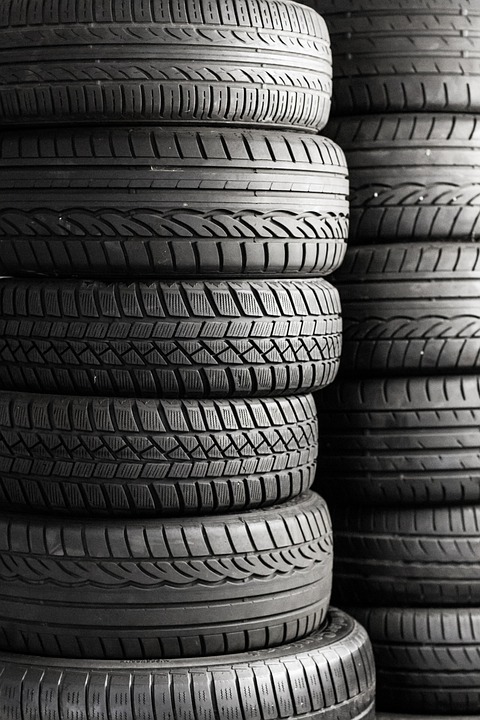DIY Tire Maintenance: Easy Steps to Keep Your Tires in Top Shape
Meta Description: Discover easy DIY tire maintenance tips to ensure your tires stay safe and functional, prolonging their lifespan and saving you money.
Maintaining your vehicle’s tires is an essential part of responsible car ownership. Well-maintained tires not only improve safety and performance but also enhance fuel efficiency and prolong the lifespan of your tires. Regular tire maintenance can help you avoid costly repairs and the hassle of premature tire replacement. In this article, we will walk you through simple, effective DIY tire maintenance steps that even beginners can perform.
Why Tire Maintenance is Essential
Proper tire care is vital for several reasons:
- Safety: Tires are your vehicle’s only contact with the road. Worn-out tires can lead to decreased traction, leading to accidents.
- Performance: Maintaining correct tire pressure improves handling and reduces rolling resistance, enhancing your vehicle’s performance.
- Fuel Efficiency: Under-inflated tires can decrease fuel efficiency. Keeping your tires properly inflated ensures you’re getting the best mileage possible.
- Longevity: Regular maintenance tasks can extend the life of your tires, saving you money in the long run.
Essential Tools for Tire Maintenance
Before beginning any DIY tire maintenance, gather these essential tools:
- Tire pressure gauge
- Air compressor or access to an air pump
- Tread depth gauge
- Car jack and jack stands
- Lug wrench
- Cleaning brush or cloth
Step-by-Step Tire Maintenance Guide
1. Check Tire Pressure Regularly
Frequency: Once a month or before long trips
Maintaining proper tire pressure is crucial for your tires’ longevity and your safety. Here’s how to check and adjust tire pressure easily:
- Locate the Recommended Pressure: Check your vehicle’s door jamb or owner’s manual for the recommended tire pressure (PSI).
- Measure Pressure: Use a tire pressure gauge to check the current pressure. Simply remove the valve cap, press the gauge onto the valve stem, and read the PSI.
- Adjust as Necessary: If the pressure is too low, inflate the tire using an air compressor. If it’s too high, let some air out until you reach the recommended pressure.
2. Inspect Tires for Wear and Damage
Frequency: Monthly
Inspect your tires for signs of wear or damage. Look for:
- Tread Depth: Use a tread depth gauge or the penny test—insert a penny into the tread with Lincoln’s head down. If you can see all of Lincoln’s head, it’s time to replace the tire.
- Cracks or Bulges: Examine the sidewalls for any visible cracks, bulges, or blisters. These may indicate structural issues that can lead to blowouts.
- Foreign Objects: Check for nails, screws, or other debris embedded in the tire, which can cause slow leaks or flats.
3. Rotate Your Tires
Frequency: Every 5,000 to 8,000 miles or as recommended by your vehicle’s manufacturer
Rotating your tires helps ensure even wear. Follow these steps:
- Use a Jack: Safely lift the vehicle using a car jack and secure it with jack stands.
- Remove Wheels: Use a lug wrench to loosen and remove the lug nuts. Take off the tires and note their positions (front left, front right, etc.).
- Swap Positions: Move the tires from front to back or side to side, paying attention to the recommended rotation pattern in your owner’s manual.
- Reattach and Tighten Lug Nuts: Reattach the wheels, hand-tighten the lug nuts first, and then use the wrench to tighten them in a crisscross pattern.
4. Balance and Align Your Tires
Frequency: When you notice uneven wear or after a tire replacement
A balanced and aligned set of tires will improve performance and extend tire life.
- Make an Appointment: While DIY tire balancing and alignment require specialized equipment, you can check for signs indicating that professional help is needed.
- Watch for Vibrations: If you feel vibrations while driving, it could mean your tires are unbalanced.
- Pay Attention to Steering: If your vehicle pulls to one side, it could indicate a misalignment.
Regular Cleaning and Maintenance
5. Clean Your Tires
Frequency: Monthly
Keeping your tires clean not only improves their appearance but also helps prevent damage from road grime and build-up.
- Use Soap and Water: Scrub your tires with a brush and soapy water to remove dirt and debris. Rinse thoroughly.
- Apply Tire Cleaner: For extra shine and protection, consider applying a tire dressing product. This can help prevent cracking and fading.
Conclusion: Take Care of Your Tires, Save Money
Proper DIY tire maintenance is straightforward and can be completed with a few simple tools. By regularly checking tire pressure, inspecting for damage, rotating your tires, and keeping them clean, you can ensure your tires remain in top shape for a longer period. Not only does this ensure your safety on the road, but it also saves you money by extending the life of your tires.
Ready to give your tires the care they deserve? Begin your DIY tire maintenance routine today and drive with confidence!
For more detailed guides on automotive care, check out our articles on vehicle maintenance and tips for enhancing fuel efficiency. Happy driving!


